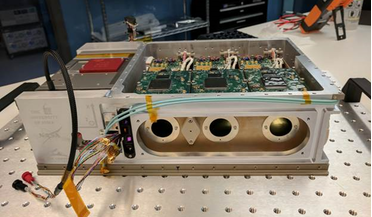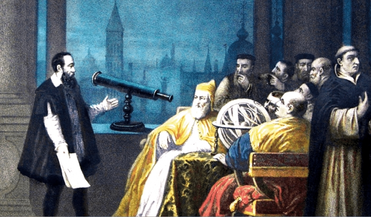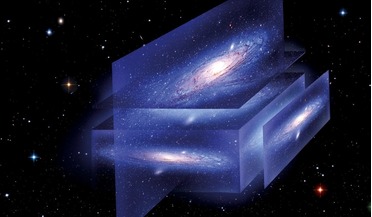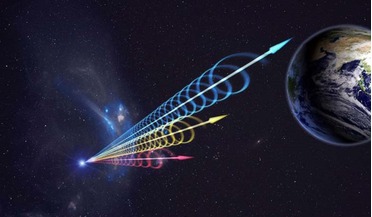 23 July 2018
Small box with big designs to find the missing matter in the Universe
23 July 2018
Small box with big designs to find the missing matter in the Universe
... x 20 x 30 centimetre CubeSat known as HaloSat is on a mission to find the missing mass in the Universe. From data gathered on the cosmic microwave background (CMB), the oldest light in the universe that has been permeating space from around 400,000...
 June 2019
Does the speed of light change with time?
June 2019
Does the speed of light change with time?
... required to test the Big Bang. Conversely, a faster speed of light in the early universe would explain the cosmic microwave background without inflated ideas. Do the Planck CMB data contain evidence of a cyclical cosmology? Dark energy not required...
 July 2017
Hunting for neutrinos in the ice of Antarctica
July 2017
Hunting for neutrinos in the ice of Antarctica
.... Yet, there is hope. It has been postulated that a fraction of these charged cosmic rays will interact with the cosmic microwave background, the ubiquitous background residual of the Big Bang, close to the phenomenon that emitted them. In these...
 26 January 2016
Scientists reveal a new way to test the origins of the Universe
26 January 2016
Scientists reveal a new way to test the origins of the Universe
... structures that we see today. Aiding the Inflation hypothesis is the tiny fluctuations in temperature in the otherwise smooth cosmic microwave background (CMB), which is the heat left over from the explosion of the big bang. Using probes such...
 October 2020
Learning from alternative universes
October 2020
Learning from alternative universes
... are (1) directly measuring the speed at which distant galaxies move away from us; and (2) looking at the Cosmic Microwave Background (CMB) and inferring from it the value of Hubble’s constant. Historically, both values have been slightly different...
 29 February 2016
Missing matter still lost, as Fast Radio Burst not quite what it seems say researchers
29 February 2016
Missing matter still lost, as Fast Radio Burst not quite what it seems say researchers
... they help to verify the ?CDM model, a model that attempts to explain the existence and structure of the cosmic microwave background, the large scale structure of galaxy clusters, along with the distribution of baryonic matter (lighter elements such...